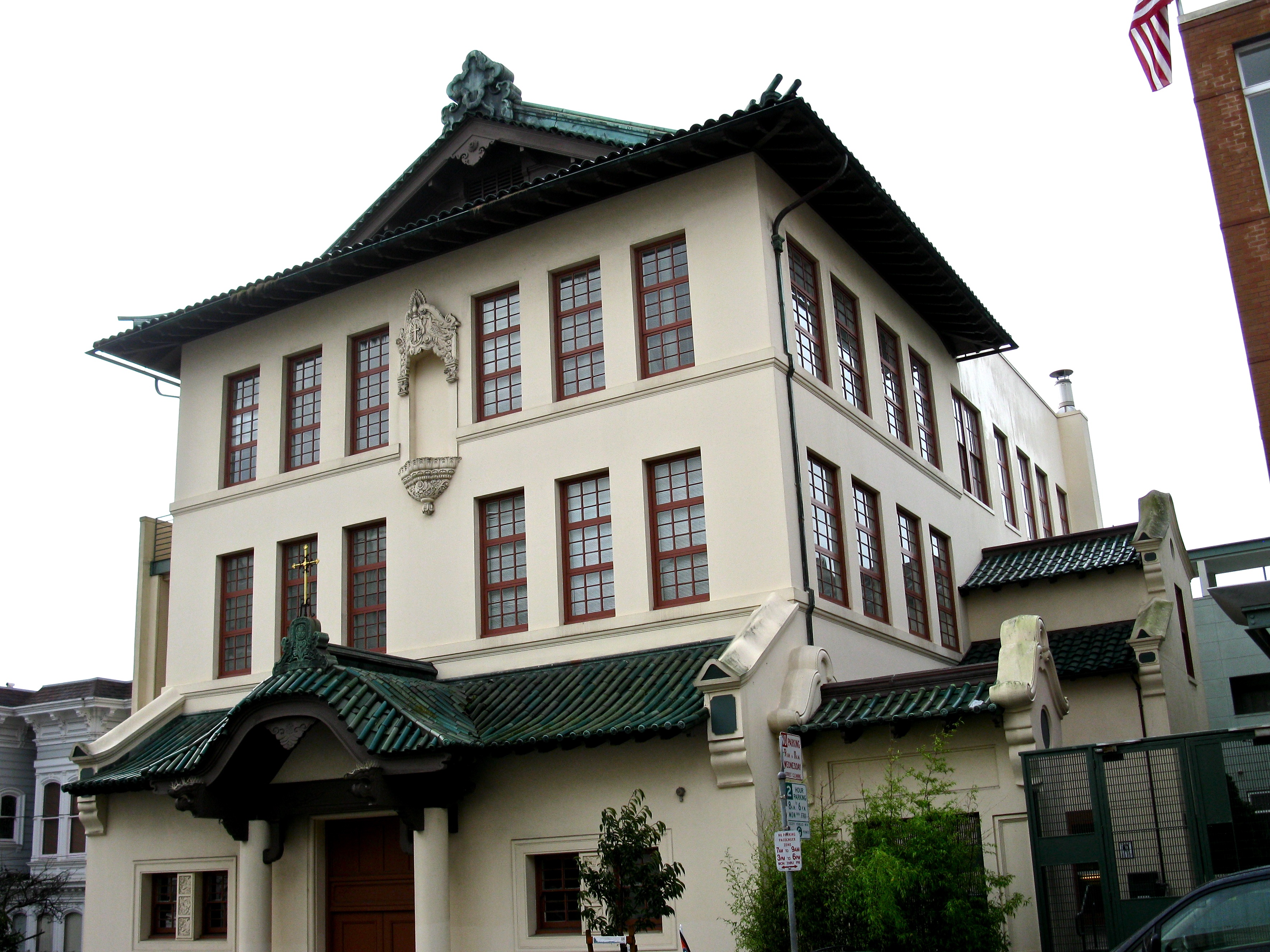
Somewhere between Dublin and Tokyo, Morning Star School in San Francisco began beating its own cultural drum.
I used to believe that Sister Eileen Donan was Irish because she had a slight green tinge to her skin. Her eyes were wide and curious, and she liked to wear kimonos on occasion whenever she slipped out of her nun’s habit. She was the head of a large contingent of Irish nuns that came to Morning Star School, a Catholic grammar school that served the Japanese American community and surrounding neighborhood. I could guess that less than 5% of the student body was Catholic, as the students were Buddhist or other (one Jewish student in the third grade). Whatever our faith, we were covertly united under one banner: The Irish flag.
It took me a long while to absorb just how much of my education was centered around Ireland, and of its politics as it related to England during that time period. This was de rigueur until the fifth grade, when some of the students rebelled against Sister Philomena, a lithe and gentle nun who spoke with a heavy brogue. She decided to spend three weeks or so studying the potato famine while we skimmed Japanese history in less than three days, a point of contention for the majority of students who were of Japanese heritage. There was a discussion, and I can still remember the face of one particular classmate who, often ridiculed for the shape of his head, gave a rather passionate speech that described the school’s continual obsession with Irish history.
It was hard to keep a class filled with Asian and African American students focused upon the Irish theme. In our fifth grade class, for instance, there was only one Irish American student, but he was just one of us. He grew up in our neighborhood and was our playmate, his mother helped at the bazaar with the other Japanese mothers, his sister went to our school and we walked the same routes towards the bus stop or home. Like him, so many children outside of the Japanese American world fit this bill, and it most likely never occurred to them or us that our little pocket of multiculturalism was anything less than normal. In fact, the only thing most of us did not have in common was religion, which is ironic since we were all students at a Catholic school.
Our tiny Catholic student body, however small, unknowingly thrived with Irish sensibilities. We were often asked to purchase our trees from one particular lot in the Sunset District of San Francisco. It was not until I was older and at another Catholic high school – this one with actual Irish American students – that I discovered that our suggested tree lot might have been funding the IRA (Irish Republican Army). It was amusing to find this out, but it all seemed to fit in. I knew what the IRA and UDA were before I discovered Monty Python, and Bobby Sands and the continual hunger strikes were more part of my culture than the interchanging characters of Watergate.
By the time college and adulthood rolled around, my San Francisco life was filled with visits to Pat O’Sheas, the indoctrination of being Green v. being the dreaded Orange and the inevitable Irish parties with the high step dancing and socializing with friends and parents from other Catholic schools. At no point did anyone ever blink an eye to my presence, the Asian American girl with the curly hair and bad math skills, as I seemed to be one of them as they were always, without a doubt, one of us.
Of course, there was always St. Paddy’s Day. Like everyone else in our town, I have had the experience of pulling drunk friends through pubs, pushing them into cars and listening to warbled choruses of mangled attempts at “Danny Boy”. Beer was green, people broke out into painful brogues and there was this recollection of mangled family genealogy traced back to the old country via five or six American states and a dozen American born ancestors until someone found the sullen potato farmer back in Cork. In many ways, St. Paddy’s Day just became worse as I became older, when yuppies would take over Union Street and make this charming little day of drunk observance into an explosion of STD and cell phones.
Still, one fact among my circle of friends – including ones from Ireland – remains the same about St. Paddy’s Day: my mother, a little Japanese lady, made the best Corned Beef and Cabbage outside of Dublin. It was a particular recipe she learned in Japan which she made faithfully once a year. Her corned beef was always juicy and succulent, full of good flavors and surrounded by good portions of cabbage, onions and potatoes. While my mother may have failed with casseroles and tried to push Hamburger Helper on us, this particular meal was marked her culinary glory.
My mother, of course, never fell into the whole Irish culture thing. She knew there were nuns who liked to wear kimonos, and the brogue seemed to thoroughly confuse her during parent/teacher conferences. In fact, my mother had an affinity for England, its cultures, mannerisms and the whole tea time thing – although her love of England took an apocalyptic nose dive after I took her there on vacation.
These days, she sings “Vive la France!” We have a thriving French community in San Francisco, too. Maybe she will find a recipe for Bastille Day.
Such is life in San Francisco. Happy St. Paddy’s Day!
(c)2014 Slow Suburban Death. All rights reserved
Be First to Comment